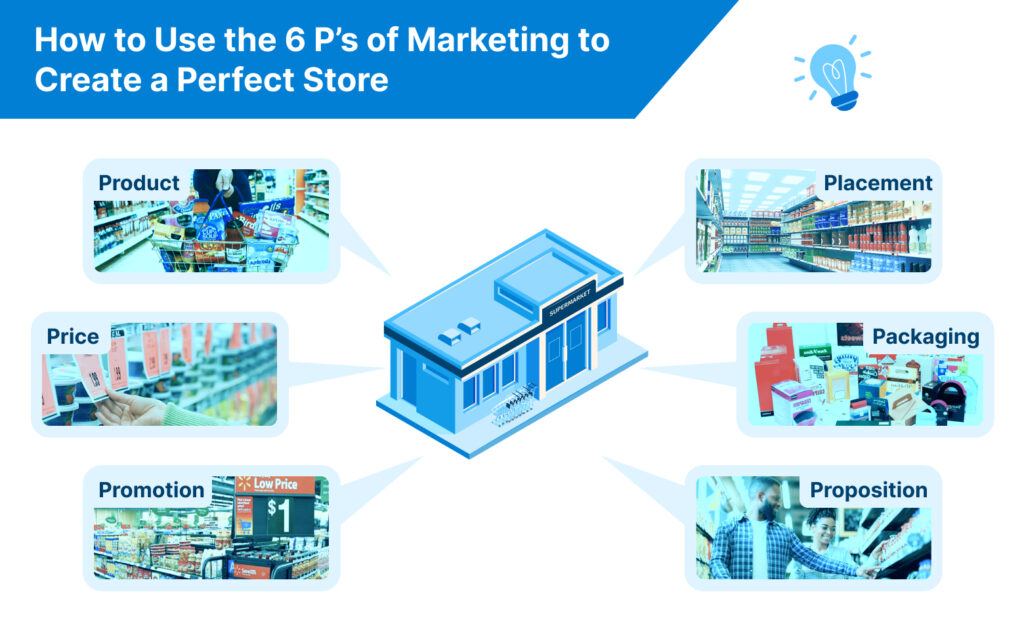
Product: The assortment of products offered must be adequate, but FMCGs must also consider performance in comparison to their competition to measure how well products are doing in-store and how appealing they are to their target audience. Selecting the right product for the right channel is also important; not every retailer sees the same types of shoppers coming through their front door. Knowing which persona visits which type of store is essential for CPG brands to select the right products to display on the shelves in order to optimize consumer satisfaction and increase basket size.
Place: Consumers are used to seeing certain items placed in specific locations in-store in some markets. So they usually know where to find their favorite deodorant or cherry-flavored yogurt. These areas in the store are called ‘destination zones’.
But FMCG companies may also want to create opportunities for shoppers to add some unplanned items to their basket or discover new entrants – for example, the same deodorant, but for sensitive skin instead of the regular variant. These areas in the store are called ‘impulse zones’.
In-store placement is key for visualization and purchase consideration. Floor plan, aisle placement, primary shelves, or secondary placements such as gondolas or specific displays are all meticulously taken into consideration by retailers and CPGs to ensure that all products effectively attract the right consumers. Answers to questions such as “Should this new laundry detergent be displayed at the store entrance in addition to its usual section?”, or “Should it be displayed in the aisle dedicated to items on promotion –with a discount coupon?” must be fact-based and pre-determined to enhance the shopping experience and maximize sales.
The same goes for shelf placement. Knowing whether a product should be placed at eye-level or not, next to a specific segment, close to competing products, or next to new assortments and why, are all aspects that manufacturers should be able to explain to retailers in their merchandising recommendation. Addressing these questions is also part of the rationale behind the best perfect store strategies. That means category teams should have in mind both the broad picture of the product performance and a more segmented one specific to stores and locations. This is how FMCG firms will successfully attract and convert the right shoppers.
Price: Since it all comes down to how much a shopper is willing to pay for a specific product, pricing dynamics are essential to achieve and implement the perfect store. On top of that, certain products are also subject to pricing restrictions in some markets, and some retailers may not be willing to go above a certain price for a product.
So, what makes one product worth more than another? How sensitive is the shopper to price? Is the brand gaining or losing share at the current price level? Is the brand profitable versus internal objectives and external benchmarks?
Choosing the right price to meet CPGs’ overall company objectives is a difficult task, but it enables them to handle the value perceptions of their brand to attract and win more shoppers while maximizing sales margins. There are multiple research methodologies that quantify the impact of price changes on volume and revenue. A perfect store strategy is one that leverages the depth of the portfolio to offer multiple price points that are catering to all key shopper targets.
Packaging: Even the greatest products in the world won’t sell if their packaging is not optimized to help shoppers navigate the shelf easily. In a perfect store, leading FMCG companies select packaging according to shoppers’ purchase intentions and agree on the right size of SKUs by considering specific retail environments and channels. The package design should be clearly visible on the shelf and use color combinations and fonts that make products stand out from the rest.
Promotion: How can a promotion incrementally accelerate sales? Any discount, value added promotion, coupon, special offer (such as 50% on second identical product purchased) can strongly support sellout, if well targeted. Effective promotions can encourage new users to try a product for the first time, reward existing users, increase pantry stocking or trigger impulse purchases, boosting sales for a whole category. The ones that drive total category growth are usually the ones retailers prefer.
Proposition: A new product that does not come up with a strong proposition might just end up confusing shoppers. As they build perfect stores, FMCG companies must communicate the value of their products to shoppers as effectively as possible. Ensuring a strong proposition by appealing to shoppers’ emotions or by educating them on the intrinsic benefits of a product can make the difference between a top and a delisted SKU. Manufacturers must make sure that their proposition efforts focus on star SKUs, as they will help build a stronger relationship with shoppers and increase consumer loyalty toward their brands. That should directly impact the way shoppers interact with CPGs’ products at the point of sale. That is why FMCG companies that win at the shelf include proposition in their overall POS execution guidelines and adapt it to certain categories or channels. A key driver in a successful perfect store strategy is to direct the communication in-store toward the shopper and not the consumer, if they happen to be different (a product for kids’ consumption might be purchased in-store by the mother).


